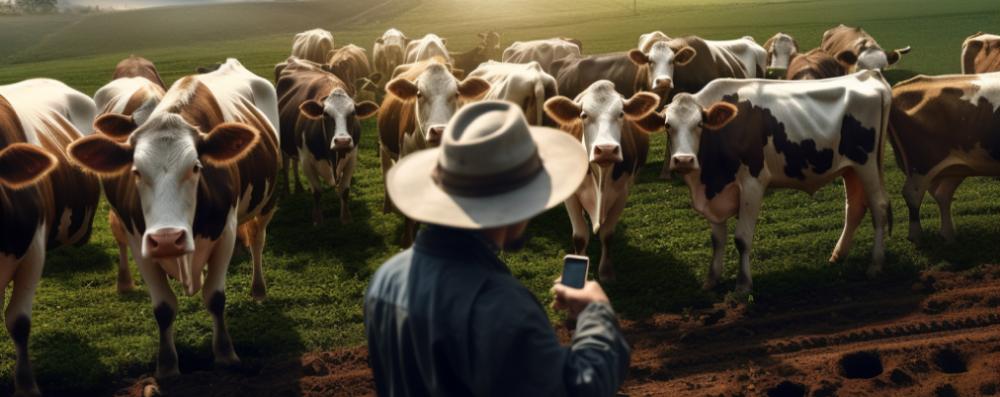Smart Farms: How Artificial Intelligence is Changing Agriculture

According to California Review Management, the artificial intelligence industry in agriculture, powered by smart farming technologies, was worth $519 million in 2019. However, it’s projected to experience a substantial increase, reaching around $2.6 billion by as soon as 2025.
Why Artificial Intelligence in agriculture is the future of smart farming and dairy farming, why farmers are hesitant to embrace smart agriculture, and the current benefits of AI in agriculture – all explained in this article.

How Artificial Intelligence Benefits Farmers
Looking at Dairy Production as a Business
Dairy farms amass a wealth of data, including cow count, health status, feed details, milk yield, and various other metrics.
Liberating Farmers from Routine Tasks
Predictions and AI’s Dynamic Role
How AI Benefits Farmers Today
AI can process data every hour and, if something isn’t going as planned, it can suggest what to do right away.
For example, if your farm normally produces 100 liters of milk per day, but the AI notices it’s dropping to 90 liters, it can tell you to check on the cows or adjust their diet immediately.
Business Improvement. AI data can be shown to potential partners or buyers to prove the farm’s capabilities and potential. Having accurate data makes negotiations more successful and can help you make new deals.
If you want to sell your farm’s milk to a new buyer, you can use AI data to show them exactly how much milk your farm produces each day, making your offer more appealing.
Cow Behavior. AI can analyze how much food a cow eats, where it sleeps, and its overall behavior. This helps farmers spot health problems early and fix them. Keeping cows healthy in a herd reduces the chances of miscarriages or sudden drops in milk production.
AI can analyze how much food a cow eats, where it sleeps, and its overall behavior.
For instance, if AI sees that a cow is eating less than usual and spending more time lying down, it might signal that the cow is sick, allowing the farmer to give it proper care.
AI Keeps Evolving. With AI, you can create a solution tailored to your needs. For example, in India, there’s a problem with cow theft. So, they’re developing a system that can recognize cow faces to reduce fraud and provide accurate data to insurance companies.

AI’s Potential vs. Farmer Resistance
Farmers’ reluctance to adopt AI, based on research by Dr. Laura Baker, primarily stems from two reasons:
Cost Concerns. Initially, AI systems were expensive, deterring farmers, particularly with milk prices that can’t cover expenses. However, as AI technology advances and more providers enter the market, costs are plummeting. Subscription models based on farm size are emerging, making AI in agriculture more financially accessible.
Fear of Job Replacement. A common fear is that AI will replace human labor. While AI excels in analysis and processing, it lacks human capabilities to intervene medically or make strategic decisions. AI functions as a consultant, automating routine tasks and saving time for human workers.
Additionally, there’s a third fear tied to change and learning. After decades of humans performing tasks, the shift to AI in agriculture causes unease among employees and managers. AI’s complexity necessitates understanding, but its purpose is to simplify tasks. This is achieved through user-friendly interfaces, manuals, and human-staffed help desks.
In essence, smart farming powered by AI is a tool for advancing agriculture, not an obstacle. The smart agriculture system represents the future of agriculture, paving the way for future smart farming through the integration of big data in agriculture and cutting-edge smart farming technologies.